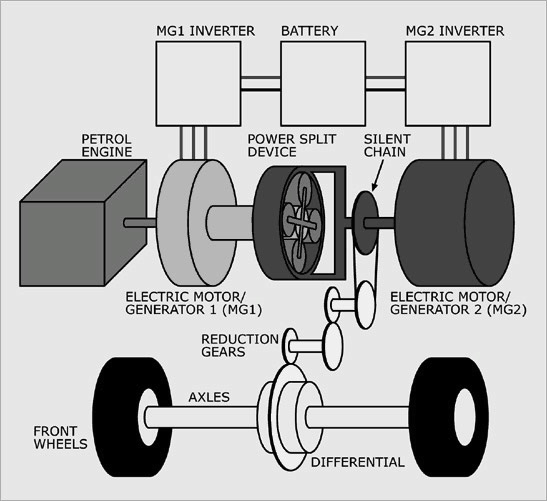anko said:Toyota would .... (http://blog.toyota.co.uk/how-does-toyota-hybrid-synergy-drive-work):maby said:jaapv said:As far as I am aware, the Prius has a CVT and planetary gear. That is a variable gear train, AKA gearbox.
it does not have anything that I would describe as a gearbox...
Toyota’s Hybrid Synergy Drive system is comprised of six primary components: a petrol engine, an electric motor, an electric generator, the power control unit, and a power split device that uses a special type of gearbox to smoothly distribute power from the engine, motor and generator.
Well, the thing in the middle of the axle on a conventional car contains multiple gears, but I don't describe it as a "gearbox", do you? There is nothing in the Toyota hybrid drive train which contains multiple gears and implements multiple drive ratios - either fixed steps or continuously variable - by switching different gears in and out of the power train or by moving bands on cones or other weird shapes. It's a three port, fixed ratio differential - admittedly using a planetary gear arrangement to reduce the physical size rather than crown gears, but functionally exactly the same as the lump in the middle of an axle.


